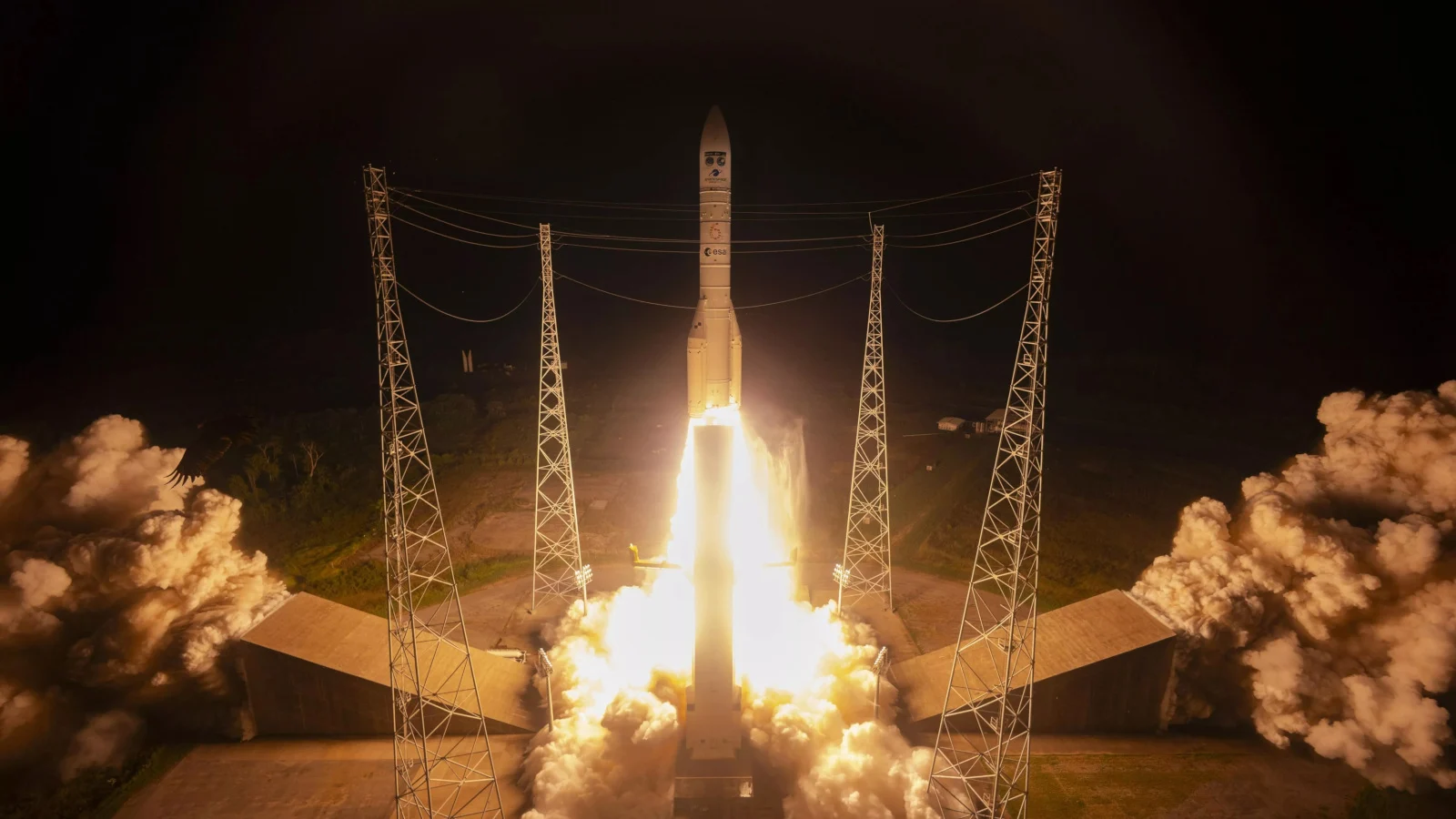
What was that? Strange spiral of light appears on the night of the Perseids
Did you see it? It wasn't a UFO, but it was definitely something space-bound!
What did we see in the sky on Tuesday night? A UFO? A bizarre meteor fireball? Here’s what we know.
At 10:40 p.m. EDT on the night of Tuesday, August 12, skywatchers across Ontario and Quebec who were outside hoping to spot Perseid meteors flashing across the sky, instead spied something very strange passing overhead.
A bright point of light slowly ‘drifted’ by, surrounded by a wispy white spiral.

This spiral in the sky was captured on August 12, 2025, from Lévis, QC. (Valérie Raymond)
The spiral made its way around on social media, with many people curious about what they were seeing.
It didn't take long for internet sleuths to track down the source. The spiral was caused by an Ariane 6 rocket, launching into space.
Hours before, at 8:37 p.m. EDT, a new weather satellite lifted off from the Guiana Space Centre, aka Europe's Spaceport, located on the coast of French Guiana, in northeastern South America.

*An Ariane 6 rocket lofts the MetOp-SG-A1 satellite towards space in a nighttime launch from French Guiana on August 12, 2025. (ESA/S. Corvaja)
READ MORE: NASA satellite captured two solar eclipses in one day
Perched atop an Ariane 6 rocket, the satellite, known as MetOp Second Generation A-1, was bound for a low-Earth polar orbit.
Thus, unlike most orbital boosters which head east when they launch, this one was headed on a trajectory straight north.
Astrophysicist Jonathan McDowell, who is an expert on space launches, orbital missions, and space junk reentry (among other things), posted about the launch on BlueSky. His maps showed the initial trajectory of the rocket as it flew over the Atlantic Ocean and then the Maritimes, where it passed directly over the northern tip of Cape Breton Island. Continuing on over Northern Quebec, Labrador, and the Canadian Archipelago, the rocket delivered its payload over the North Pole.

DON'T MISS: Look up! Perseids and a Predawn Planet Parade shine in August 2025
Once the rocket's upper stage had released MetOp SG A-1 into orbit, and was making its second pass around the planet, it reached the point where it began its de-orbit procedures.
This involved adjusting its trajectory so that it would plunge back down into the atmosphere, while simultaneously putting itself into a spin for better aerodynamics, and dumping the excess fuel in its tanks.
As this process began, roughly 800 kilometres above Lake Superior, the spin of the rocket stage turned the venting fuel into a widening spiral of glittering droplets, lit by the Sun peeking over the limb of the planet.
At that height above the surface, this glowing spiral was visible across a wide region, and would have been seen by anyone with clear skies who was looking up at the right time.
What is MetOp-SG-A1?
According to the European Space Agency, MetOp Second Generation A-1 is the first of two new weather satellites being launched into low-Earth orbit.

An artist's rendition of the MetOp Second Generation A-1 satellite, flying in low-Earth orbit over a hurricane. (ESA/ATG medialab (CC BY-SA 3.0 IGO))
It carries a payload of six science instruments designed to provide temperature and humidity data for different levels of the atmosphere, at different wavelengths of the spectrum of light, as well as information on clouds, aerosols, ozone, and other trace gases. Also included is the Copernicus Sentinel-5 spectrometer, which will record data on air pollutants, ozone, and greenhouse gases.
Next year, sometime between June and August 2026, MetOp-SG-A1's partner satellite, MetOp-SG-B1, is expected to launch with a slightly different, but complementary suite of instruments.
Together, they represent the first of three pairs of MetOp-SG satellites that will operate on this mission over the next 20 years.
